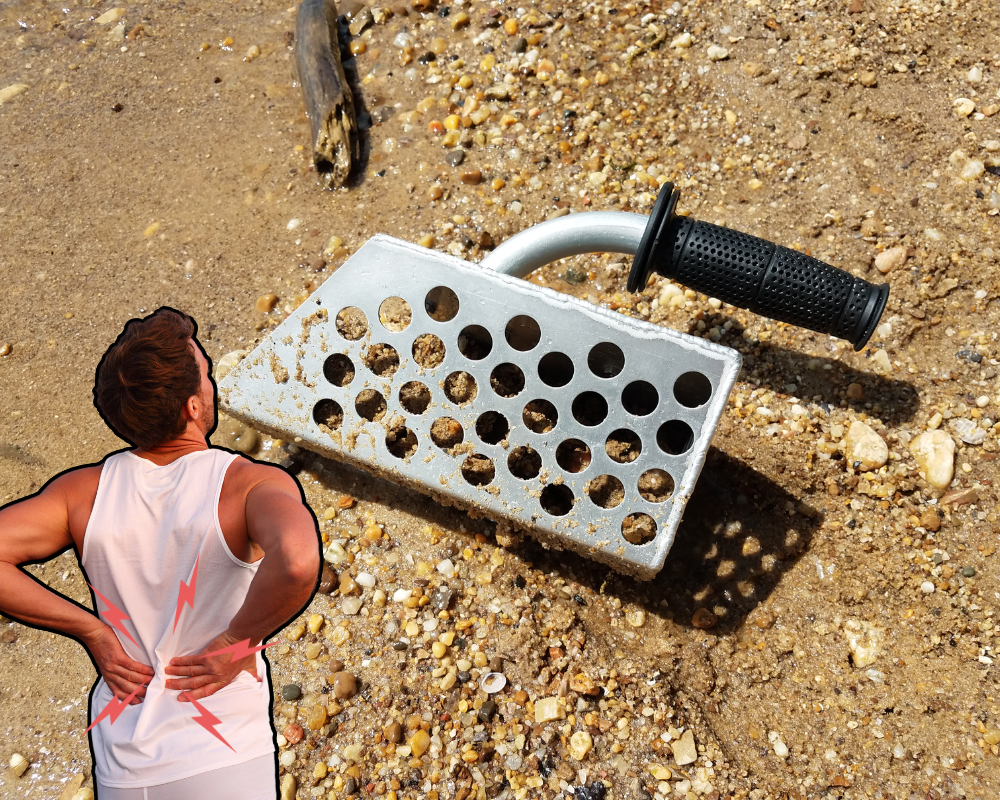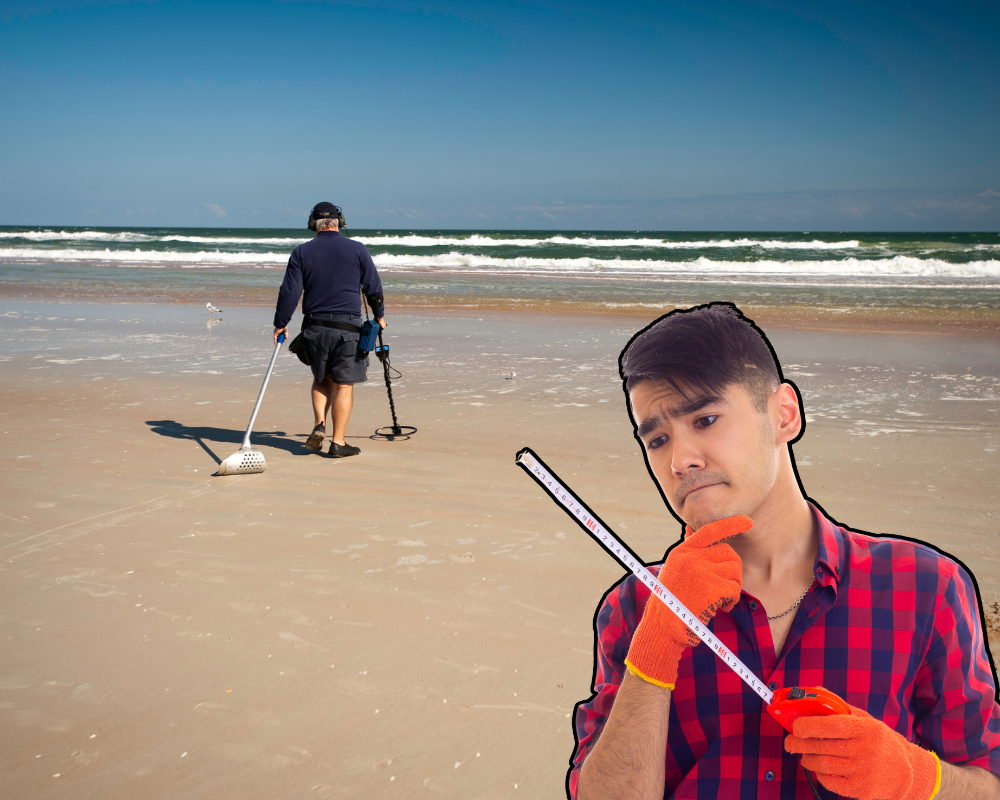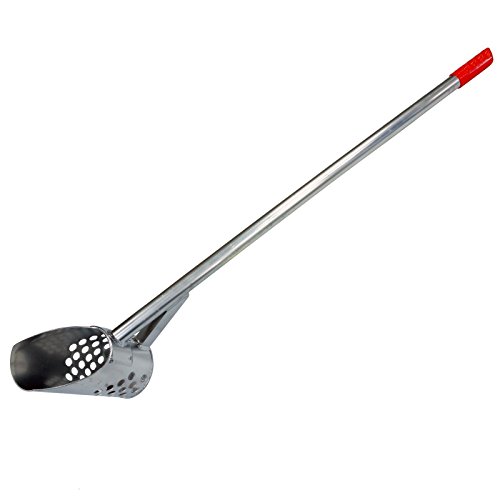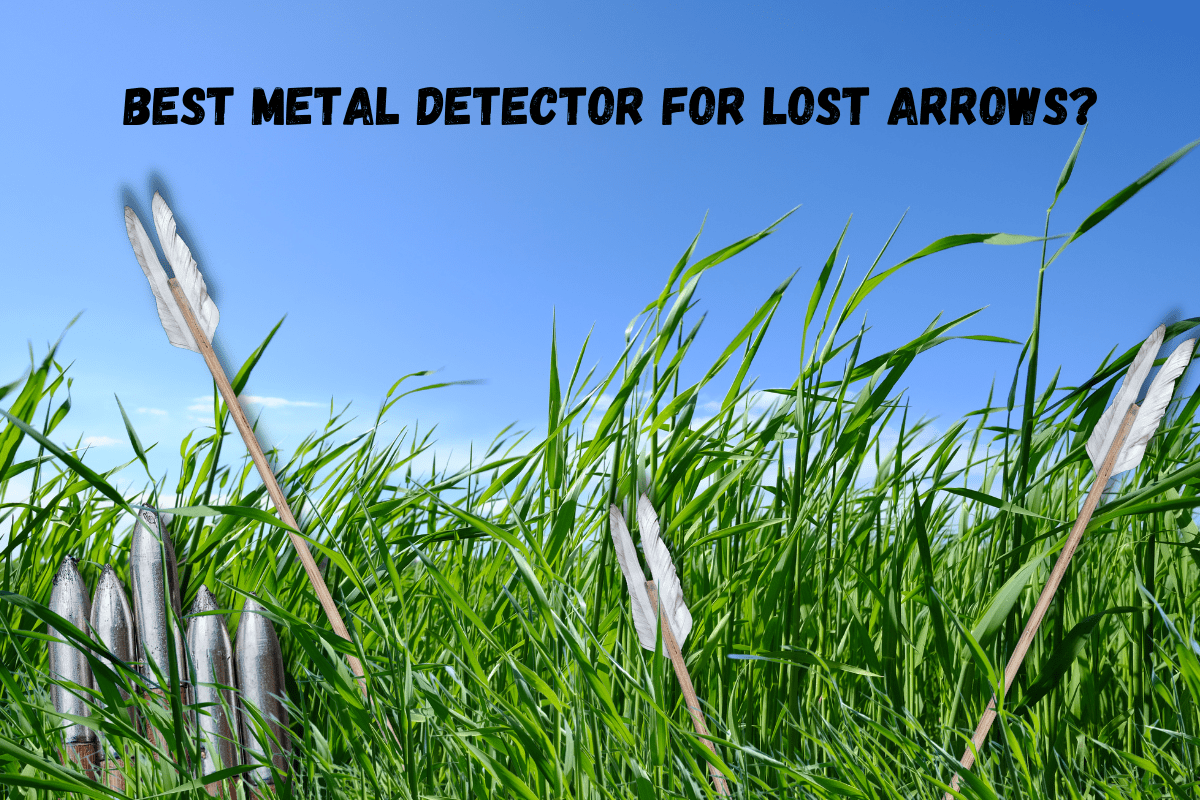As someone who’s no stranger to physical labor and its toll on your body, I’m confident that a long-handled sand scoop is a metal detecting necessity!
The strain in my back and pain in my knees is a regular reminder to let my tools do the job they’re meant to do.
I’m sure some of you can understand the relief a good sand scoop with a long handle can be when the beach has your coil chirping nonstop. And if not, take my advice. Your future self will thank you.
In this article, I’ll explain why hunting with an extended scoop is a must. From there, we’ll go over your options on current models. But if you’re here for quick recommendations, my top three sand scoops are just below.
Best Metal Detecting Sand Scoop With Long Handle

- The handle alone is 45.5" long. Never kill your back on a hunt again!
- The 2-piece detachable handle is made of carbon fiber for a combo of durability and comfortability.
- 304 stainless steel is what makes this wide-mouth sand scoop resistant to corrosion while you explore the beach and ocean depths.
- 7 mm hexagon holes are a popular choice for capturing every manner of treasure, but for those special requirements, you can opt for 9mm or 10 mm scoops.

- Shaledig makes their scoops tough by using 304 stainless steel for the scoop, and alloy steel for the handle, all of which are galvanized for protection against the elements.
- You can expect to get to all your buried finds with the 47" reach the detachable handle provides.
- Less expensive than the top pick and rivals its popularity.
If you’re still reading beyond my recommendations, let’s take a few minutes to explain the key features of a sand scoop. Knowing what’s available will make your decision that much more informed!
What is a Sand Scoop Used for?
A sand scoop is a multi-functional tool used to sift out dirt and sand to separate larger objects in hopes of finding something valuable.
Besides relieving your back pain, what other benefits come with using a sand scoop?

Without a long handle, a detectorist would typically go to their hands and knees and dig up any detected objects with a handheld scoop or general digging tool. That’s not so bad, right?
Well, every treasure hunter familiar with detecting along the beach knows that time isn’t generally on your side. Valuable finds don’t stay buried for long between the changing tides, other beach scavengers, and frequent vacationers.
A sand scoop with a long handle can make the entire beach detecting process more efficient.
The right long-handled sand scoop keeps you on your feet while your foot applies the pressure for a deeper hole. The added leverage with fewer movements and adjustments will ensure you keep a steady pace, reduce the chance of aches and pains, and cut through tougher terrain.
How Long Should a Sand Scoop Handle Be?

Most popular sand scoop handles have an average length of 45 inches, but that doesn’t work for everyone.
A sand scoop handle should be long enough to limit the movement necessary to search and recover potential finds while metal detecting.
Whether that’s an extra three or four feet will depend on your body type. For instance, what is your standing height? Do you have longer arms than the average person? These questions will help determine the length you need.
What Size Hole is Best for a Sand Scoop?
Like the length of the handle, the size of the holes in your sand scoop will vary depending on the need.
Generally, you want a hole big enough for sand to sift through your scoop quickly but not so big that valuables go undetected.

In my opinion, a sand scoop with holes between 7 mm and 10 mm is a good standard. This leaves plenty of room for sand to flow, but it still gives you a fair chance at catching most bracelets and necklaces.
Anything bigger than 10 mm and those smaller or thinner pieces will fall back to the sand.
Sand Scoop for Metal Detecting: What Materials Are There?
Finally, consider the material used to make your sand scoop and handle. They won’t always be the same, and each has its pros and cons.
The more popular metal detecting sand scoops use materials like stainless steel, carbon fiber, and aluminum. But it’s common to find alternatives made of plastic, titanium, wood, and composite.
The reason stainless steel, carbon fiber, and aluminum are the most widely constructed sand scoop parts is their strength and resistance to corrosion.

You can learn more about the corrosive resistance of stainless steel here. But the big takeaway is salt in the sand will speed up the degradation of weaker metals. In contrast, stainless steel is better equipped in these conditions.
The Best Sand Scoops With Long Handles for Metal Detecting
If you’re an experienced detectorist, you’ve probably skipped most of what I’ve gone over. If you haven’t, you should now have a grasp on what properties make a good sand scoop with a long handle.
Of course, there’s more to it, depending on your chosen material and design. So let’s review my top 3 long-handle sand scoops and uncover what makes them unique.
CKG Sand Scoop
My favorite and best sand scoop with a long handle is the CKG stainless steel shovel.
- Carbon fiber handle that conveniently detaches from the scoop and can be broken down into two smaller pieces. This makes this portable metal detecting sand scoop the ideal option for traveling.
- This particular model has a large basket with 7 mm holes. But other models are available with alternative-sized holes and smaller baskets.
- The length of the carbon fiber handle is 45.5", and is extremely easy to grip for longer periods of treasure hunting.
- Free CKG pouch included at no additional cost.
It’s as versatile a tool as it is sturdy. The link above will take you to the version with 7 mm holes, but other sizes are available.
First, let’s talk about its versatility. Not only can you remove the handle and get up close on your dig, but the carbon fiber handle can separate into two pieces.
While that’s great for traveling, consider the ease of carrying your scoop and handle in your pouch after a long walk down the shore. Lugging your beach metal detector is heavy enough without thinking of your other tools and finds.
Speaking of, CKG throws in a complimentary branded pouch for convenience. You may have something nicer already, but free is free.

Now we’ll get into the CKG sand scoops durability.
SAE 304 stainless steel is extremely popular because it’s alloyed in a way that makes it hard to damage, lightweight, and resistant to most forms of corrosion. I say most because liquids with high acidity will pose more of a threat to your scoop.
But a beachcomber like you won’t have to worry about that. And the sand scoop isn’t the only rugged part of this tool. The handle is built of carbon fiber.
Carbon fiber gives you all the strength of steel but makes handling the shaft a breeze.
If you already have a sand scoop that you love, but the sound of the carbon fiber handle has you feeling left out, don’t worry! You can actually buy the carbon fiber handle for your beach scoop and save yourself $100.
Shaledig Sand Scoop
Next up is the Shaledig metal detecting sand scoop.
This bad boy shares a lot with the CKG long-handled sand scoop. Their most popular model comes with 7 mm holes, is 47 inches long, and is made with 304 stainless steel.
The big difference? The handle isn’t carbon fiber. Like the scoop, the shaft is crafted with corrosion-resistant alloy steel, making it slightly heavier than the CKG model.
The good news is that the handle is detachable from the scoop for more accessible transport.
And while you’ll save a bit of money by choosing this Shaledig sand scoop, some owners have complained about the build quality. Most notably, its durability in the water.
I can’t speak to that personally. Every body of water will have variations in pH levels that react differently to certain metals.
I won’t say it’s a huge red flag, but a carbon fiber handle wouldn’t present the same concerns.
Just saying…
RTG Sand Scoop
I really like RTG products. The RTG Pro Aluminum beach scoop is a hair more expensive than the Shaledig shovel, but it’s a solid option.
From the tip of the scoop to the rubber handgrip, you get a 47-inch extension at a standard 20-degree angle for the perfect amount of leverage.
Unfortunately, the RTG long-handled sand scoop comes up short compared to the others.
I had a chance to try it out, and while I wasn’t complaining, I could feel the weight difference. It’s heavier, for sure.
You see, aluminum is used for beach and underwater treasure hunting because it’s corrosion-resistant, unlike other iron-containing metals.
And it’s much lighter than stainless steel. But carbon fiber is even less dense than aluminum.
However, the real issue comes down to the design. It’s built as one solid piece. There’s nothing to detach to make it as versatile and comfortable as the other choices. That could be why the weight was more noticeable on the way back to the car.
The Best Beach Sand Scoop on a Budget
If you’re new to this hobby, it may feel like you’re spending money left and right. It can get expensive for sure, but the adventure is worth it!
Although, I do have some other prospects for you to consider. A far more affordable sand scoop for metal detecting is the Pro Knee High sand scoop.
This is strictly a budgetary tool alternative. For most detectorists, some bending will still be required.
The Pro Knee High sand scoop maxes out at 24 inches in length. So if you’re over five feet tall, it won’t be as easy-functioning as the CKG long-handled sand scoop.
This little digger is made as one piece from galvanized steel, which holds up well to corrosion.
But besides the height, the problem with this sand scoop that owners have complained most about is the welding quality. Users complain about the sharp edges at the joints. You don’t experience this with higher-end models like the CKG.
It doesn’t mean this isn’t a good metal detecting sand scoop. It just means it could be better.
But hey…it’s tough, and it’s cheap.
DIY Sand Scoop Handle
Last but not least, you could build your own sand scoop handle. It’s not that difficult to do. While it may have some drawbacks, it works in a pinch.
The most common approach to a DIY sand scoop handle is to use a piece of wood similar to a broom handle.

You’ll likely have to shave down the end to fit your scoop hole. But after that, secure it firmly, and you’ve got yourself an upgraded sand scoop with a long handle.
I’d also wrap the handle with duct or electrical tape to avoid the splinters you’ll undoubtedly get.
I’ve also seen others use PVC pipe or rolled-up sheet metal instead of wood. All of these are inventive ideas, and all of them will work.
But remember that your choice of material does matter. It must be sturdy enough to last through the wet sand and regular use. Otherwise, you’ll be replacing the long handle every couple of hunts.
Until next time!







